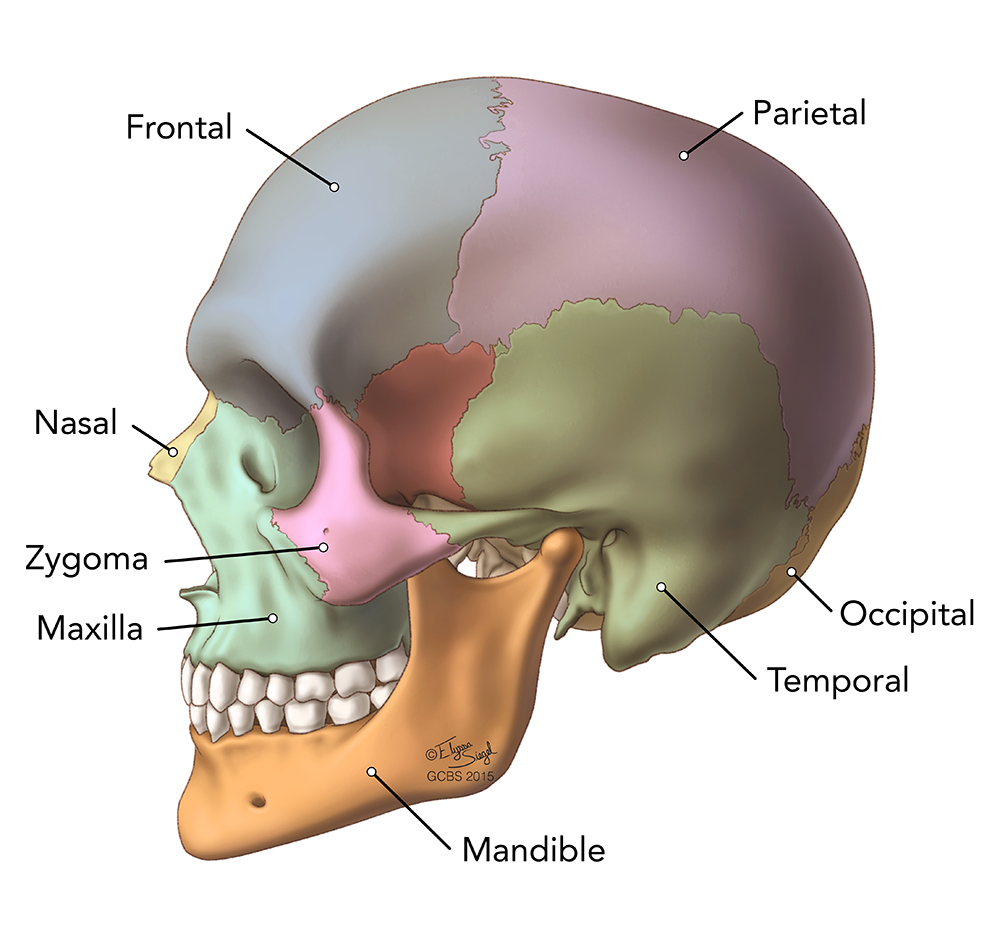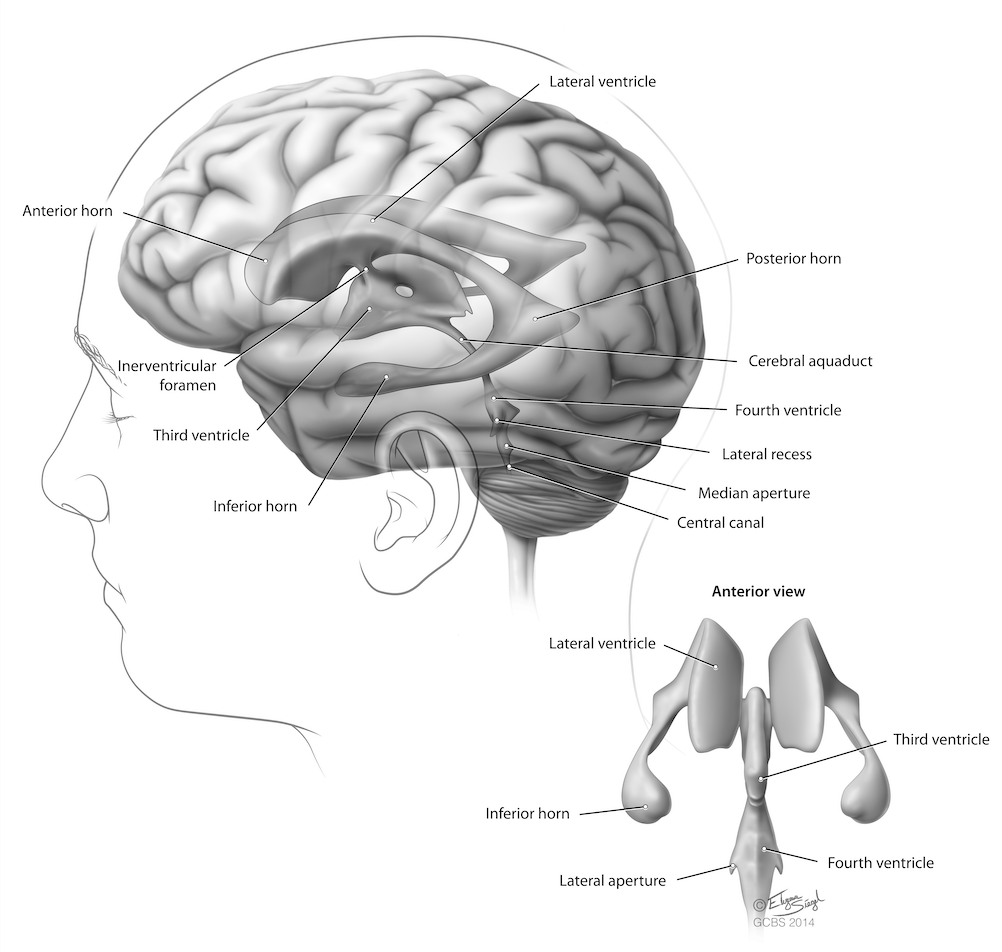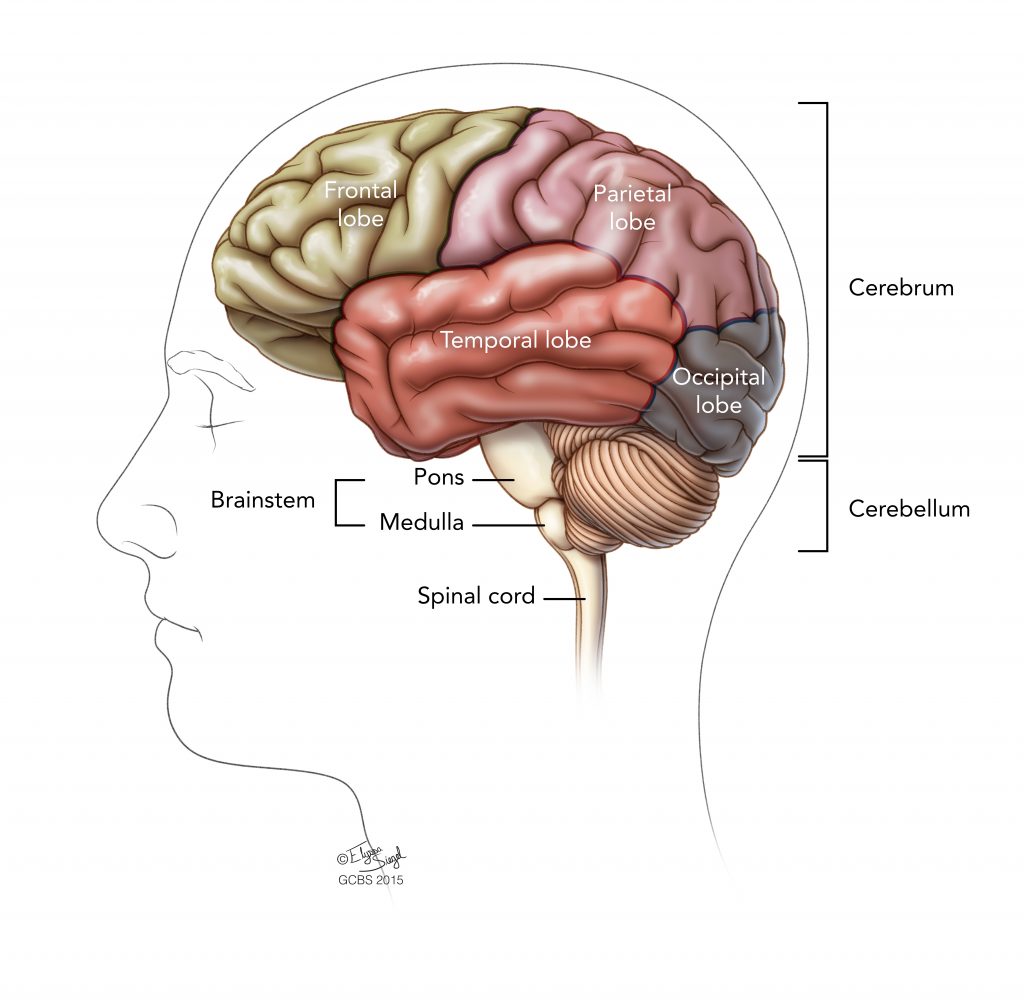Brain Anatomy
The brain is the control center of the nervous system. It makes it possible for us to think, feel and move. The brain constantly receives information and sends out instructions to the body through the spinal cord and the body’s vast network of nerves.
The largest part of the brain is the cerebrum, which controls the most sophisticated functions, such as thought, imagination, memory, emotion, speech and sensory perception. It has two halves, or hemispheres. Each hemisphere is covered by a layer of gray tissue, called the cerebral cortex, which is responsible for the higher functions of the brain, including conscious thought.
- The cortex of each hemisphere has four lobes: the occipital, temporal, parietal and frontal lobes. The occipital lobe controls vision. The temporal lobe controls sound and speech. The parietal lobe controls movement, touch and recognition. And the frontal lobe controls thinking and planning.
- The brain stem and hypothalamus control automatic processes, such as breathing and heartbeat.
- The cerebellum acts as a “mini brain” that coordinates body balance, posture and movement.
Brain tissue is soft and delicate, and requires protection. In addition to the protection provided by the skull, the brain is surrounded by the connective tissue membranes (meninges), the dura mater, the arachnoid layer and the pia mater. Beneath the arachnoid layer is a wide space filled with cerebrospinal fluid (CSF). This fluid forms a liquid cushion that reduces the weight of the brain and protects it from knocks and jolts. CSF also helps the brain to receive nourishment.
The Skull

The skull is made up of 22 bones: eight that surround and protect the brain and 14 that form the face.
In newborns, the skull bones are not completely fused; they have a space between them (called fontanels) which allow the skull to be compressed slightly during birth and accommodate growth of the brain during early infancy. By one-and-a-half years of age, the skull sutures have formed and the fontanels have disappeared.
In adults, all but one of the skull bones’ joints (sutures) have fused. The sutures lock the edges of the skull bones together, like pieces in a puzzle, to form a structure that is both rigid and strong. The mandible, or lower jaw, is the only moveable skull bone, allowing the mouth to open and close.
The nervous system
The nervous system is a communication network that controls and coordinates most body actions. People are not generally aware of some of these activities as they occur, such as regulating body temperature, breathing or heart rate. Others we control, such as movement, talking, eating and thinking.
The nervous system has two main parts: the central and the peripheral nervous system. The brain and spinal cord make up the central nervous system, or CNS. The nerves branching off the central nervous system make up the peripheral nervous system, or PNS. The PNS consists of nerve bundles made up of sensory and motor neurons, which carry signals toward or away from the central nervous system.
Meninges
Brain tissue is soft and delicate, and requires protection. In addition to the protection provided by the skull, the brain is surrounded by three connective tissue membranes (meninges). The dura mater is the tough outermost layer covering the brain and spinal cord. Next is the arachnoid layer, a web-like loose layer. Under the arachnoid layer is a space filled with cerebrospinal fluid (CSF). Finally, closest to the brain is the pia mater, which supplies blood and nutrients to the brain.
Cerebrospinal fluid
This fluid forms a liquid cushion that reduces the weight of the brain and protects it from knocks and jolts. CSF also helps the brain to receive nourishment.
Ventricular system
The ventricular system is a set of four interconnected cavities (ventricles or lumen) in the brain. Within each ventricle is a region of choroid plexus where cerebrospinal fluid (CSF) is made. The ventricular system is continuous with the central canal of the spinal cord from the fourth ventricle. This allows for CSF to circulate.

Brain components

Brain stem: controls breathing, heart rate and the nerves and muscles used in seeing, hearing, walking, talking and eating
Cerebellum: controls movement, balance and posture
Cerebrum: controls voluntary movement, as well as thinking, learning, problem solving, speech, emotions, reading and writing; and the spinal cord, which carries messages between the brain and the rest of the body.
The lobes
The human cerebrum is quite large. It has two halves, or hemispheres. A band of nerve tissue, called the corpus callosum, links two halves to allow them to exchange information. Each hemisphere is covered by a layer of gray tissue, called the cerebral cortex, which is responsible for the higher functions of the brain, including conscious thought. The cortex is composed of sulci (folds) and gyri (bulges), which together provide a large surface area in the limited space inside the skull.
The cortex of each hemisphere has four lobes: the occipital, temporal, parietal, and frontal lobes. The occipital lobe controls vision. The temporal lobe controls sound and speech. The parietal lobe controls movement, touch and recognition. And the frontal lobe controls thinking and planning.
Conditions
Request an appointment online and we will guide you through the next steps
Get to know the physicians of Goodman Campbell
Goodman Campbell
Patient Stories
Request an appointment online and we'll guide you through the next steps.
